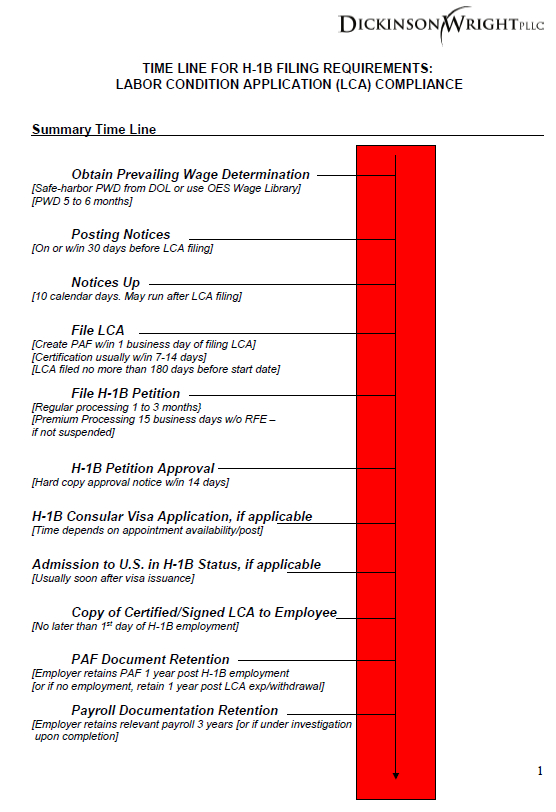- with readers working within the Retail & Leisure industries
- within Antitrust/Competition Law topic(s)
The H-1B visa program is a cornerstone for U.S. companies looking to hire international professionals in specialty occupations—from engineers and IT experts to researchers, teachers, and healthcare professionals, among others. Unfortunately, the cap of 85,000 visas that are available each year does not meet the demand. The selection rate of H-1B registrants for the fiscal year 2026 cap is estimated to be about 34 to 35% based on data shared to date. We should have the official count soon from U.S. Citizenship and Immigration Services (USCIS).
Typically, these visas require a bachelor's degree or higher, with many roles demanding advanced technical or theoretical expertise. Each year, the registration window opens briefly in March, typically giving employers a chance to indicate interest in sponsoring candidates. This year, the registration period was available from noon Eastern on March 7 through the same time on March 24.
During the registration period, employers submit basic information about their company and the prospective employee. This streamlined online process was designed to reduce the paperwork burden while still allowing USCIS to screen for eligible candidates. On March 31, USCIS announced that the initial H-1B registration process was completed. The filing period for H-1B I-129 petitions commenced on April 1, 2025, and will end on June 30, 2025.1
The Road Ahead: Selection and Beyond
Now that the H-1B Registration period has concluded, the next steps in the H-1B journey are both critical and detailed. Here is what to expect:
- The Lottery Selection Process
The initial lottery is designed to manage the high demand for H-1B visas. USCIS randomly selects registrations from the pool of applicants, which includes:
- Primary Lottery: In which all registrations are included and a random selection is made.
- Advanced Degree Exemption (Master's Cap): If applicable, candidates with U.S. advanced degrees might have a separate lottery, increasing their odds.
This process is strictly random, and results are usually announced within a few weeks after the registration period closes. It is important to remember that even if a registration is not selected in the first round, there is sometimes a second chance as USCIS may conduct additional rounds if needed.
- Possible Second-Round Selections
In some previous fiscal years, USCIS announced the selection of additional registrants eligible to file H-1B I-129 petitions after the initial selection in order to use all 85,000 H-1B visa numbers available annually. For the 2025 and 2024 fiscal years, there were two rounds of selections while in the 2022 fiscal year, there were three. In fiscal year 2025, there were 479,953 registrations while in fiscal year 2024, there were 780,884 due to the less stringent controls on registrations.
Whether another round of selections may be on the horizon remains to be seen. If another selection round occurs, the criteria for a random selection is applied in the same manner as for the initial round. Employers and beneficiaries should keep a close watch on updates from USCIS, as timelines and processes might shift slightly based on demand and policy changes.
- Filing the H-1B Petition
If your registration is selected, the next step is filing a comprehensive H-1B petition with USCIS. This petition is significantly more detailed than the initial registration and includes:
- Labor Condition Application (LCA): Certified by the U.S. Department of Labor, this document attests that the employer will pay the required wage, which is the higher of the actual or prevailing wage for the H-1B position in the area of intended employment and that the working conditions for the position will not adversely affect U.S. workers. It is important to remember to retain the associated Public Access File for compliance. 20 CFR §655.760(c) requires an employer to retain the PAF information for one year beyond the last date of employment of any H-1B nonimmigrants employed under the LCA; or if no H-1B nonimmigrants were employed under the LCA, one year from the date the LCA expired or was withdrawn. Payroll records for H-1B employees and other employees in the occupational classification must be retained at the employer's principal place of business in the U.S. or at the place of employment for a period of three years from the date(s) of record creation, except if an enforcement action is commenced, all records must be retained until the enforcement proceeding is completed.
- Evidence of Specialty Occupation: Detailed documentation showing how the job qualifies as a specialty occupation and that the candidate meets the required educational and professional criteria.
- Supporting Documentation: The documents may include academic credentials, professional experience letters, and any other evidence that bolsters the case for the candidate's qualifications, which meet the requirements for the specialty occupation.
The filing window is strict (e.g/ 90 days). Employers must submit all supporting documents, forms, and fees within the designated time frame. Once received, USCIS begins the adjudication process, which may involve requests for additional evidence or even interviews in more complex cases. There have been recent stories of biometric requests from USCIS for some I-129 H-1B beneficiaries due to additional vetting processes implemented by the Trump administration.
- USCIS Review and Approval
After submission, the USCIS review process unfolds in several stages:
- Receipt and Initial Review: USCIS confirms receipt of the petition and checks for basic eligibility.
- Detailed Examination: The petition and supporting documentation should normally be thoroughly reviewed. In cases where documentation is robust and clear, this process may be straightforward. However, if USCIS requires further clarification, they will issue a Request for Evidence (RFE). In some cases, USCIS may issue an RFE for evidence already included with the record, which is very frustrating for applicants and their attorneys.
- Final Decision: Upon review of all submitted materials, USCIS will make its decision to approve or denythe petition. This step officially enables the candidate to begin employment under H-1B status as soon as October 1, the start of the new federal fiscal year.
- Employers may choose to submit the I-129 H-1B petitions with or without the I-907 premium processing fee of $2,805.00 to receive an answer in 15 business days. The official start of H-1B status will be by October 1, 2025 at the earliest, based on the commencement date of the federal fiscal year. Otherwise, the current posted processing time by USCIS for most H-1B I-129 petitions is from four to six months.
For employers and candidates alike, the post-registration phase is a time for both anticipation and preparation. It is advisable to check for updates regularly from USCIS as to potential additional selections of H-1B registrations and consult with legal experts who specialize in immigration to ensure that every detail is in order. With regulations and processes that can evolve based on policy changes or demand fluctuations, staying informed is key.
- Options for the Unselected
For those not selected during the fiscal year 2026 lottery, there is hopefully next year, but it is important to remember to consider available alternatives. For example, there are common exemptions from the H-1B annual cap for certain employers, such as for qualifying institutions of higher education, nonprofit research organizations, and governmental research organizations. In addition, a beneficiary of a petition for H-1B visa status may also be exempt from the cap if they have been counted against the cap in a petition of another employer in the six years preceding the filing of the current petition unless the individual would be eligible for a full six years by spending one year outside the United States (U.S.) There is also an exemption from the cap exemption from the annual H-1B cap granted to physicians who are the recipients of a clinical J-1 waiver of the two-year home residence requirement attached to J-1 exchange visitor visa status.
In addition, an H-1B beneficiary may be concurrently employed by both a cap-subject and cap-exempt petitioner without being counted toward the H-1B cap.2 The regulations, however, limit the validity of the "concurrent" cap-subject petition to the end date indicated on the approved cap-exempt petition3 and expressly provide for potential revocation of the cap-exempt petition if the beneficiary's cap-exempt employment ceases before the end date on the concurrent cap-subject petition.
The analysis for potential options also includes a consideration of other possible nonimmigrant visa categories, either as a principal or dependent, if available. (e.g., F-1, J-1, E, L, TN, O, P, etc.)
In conclusion, it is important for those H-1B registrants in the first round to consider alternatives with their legal representatives as well as to monitor the possibility of additional selection rounds.

Footnotes
1 See https://www.uscis.gov/newsroom/alerts/fy-2026-h-1b-initial-registration-selection-process-completed .
2 8 CFR 214.2(h)(8)(ii)(F)(6).
3 8 CFR 214.2(h)(8)(ii)(F)(6)(i).
The content of this article is intended to provide a general guide to the subject matter. Specialist advice should be sought about your specific circumstances.

